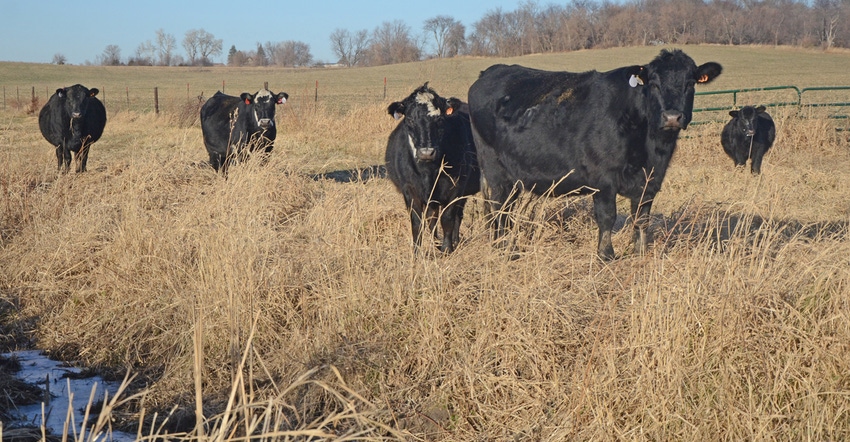
When you deal with 8 feet of water over your pasture and cropland on an annual basis, the landscape can change quickly. For farmers and graziers like Wade Dooley, who farms along the Iowa River in Marshall County, it pays to be ready to change the farm operation just as the weather changes.
“Through my childhood, we had occasional flooding every year, but it was pretty minimal. But toward the late ‘90s and early 2000s, the flooding started getting more frequent and bigger. In ‘97, it was almost a total loss of everything along the river,” Dooley says. “Since then, when the river goes, it goes wild. We’ll have 300 acres under water in a single time, and the river will be 8 feet deep over the top of my pasture.”
Related: Farming: The long game
“Farming a river bottom, we have to be ready to change. In the rainy season, when we think it might flood, we usually have about 12 hours to get things off the bottom before the flood wipes out the pasture,” he adds. “I watch the river gauges up north pretty closely. Once they start spiking, I can say, ‘I know how long it takes for the water to get here, and I know how much rain we’ve had. Now I need to move cows off the bottom.’“
Adjusting to change
In 2007, Dooley came back to the farm after graduating from Iowa State University in 2005 and spending time working in the vegetable seed industry in Florida. After he came back to the farm in 2007, he made the move from continuous grazing to rotational grazing.
“When I came home, I started subdividing and cut down to less than 3 acres in each paddock,” he says. “They were daisy-chained, and it was a pain to get cattle to move from lower ground to higher ground where they’d be out of the water, because they just wanted to go to the next paddock and eat the new grass. I had to put in new lanes and re-subdivide according to how the cows were grazing.”
Over time, Dooley has designed his paddocks to make it easier to move cattle in the event of a flood.
“All my paddocks were designed so I could bring the cows from any end of the farm they are at, and bring them up to the house or put them on high ground if the flood isn’t going to last too long,” he says. “Having those paddocks designed that way meant an awful lot of extra fencing, because now I’ve got to have lanes that go every which way, because once the water starts rising, the cattle don’t want to walk through water. So I had to set up all my lanes so they would naturally want to go toward the end of the farm that takes the longest to get wet.”
This spring, he sold off most of his cow herd to prepare to update his paddocks and water system.
“I’ve got to build new paddocks to guarantee I have lane access to each paddock on high ground to move the cows off during flooding,” he says. “My goal is to have most of my paddocks 10 acres or less and be able to subdivide in season as necessary. In June, I have to flash-graze, because the grass is getting ahead of cows. But in August, I have to watch how long cows are in a paddock because there’s no rain. I have to have paddocks modular to manage them completely different in different times of year, and I have to have reliable water access through drought and floods.”
“I also plan on redesigning our drainage ditches and turning them into canals, because the river flooding has effectively filled in all of our drainage ditches, and completely filled in the drainage ditch that drains the highway to the river,” he says.
Benefits of grazing
While grazing continuously flooded ground takes adjustments, Dooley has also improved the health of his river-bottom pastures through management intensive grazing. He’s reseeded these river-bottom pastures twice, and through rotational grazing, he’s started to see more diverse species like orchardgrass, tall fescue and reeds canarygrass in his previously brome-dominated pastures.
“Since I do rotational grazing, it makes it a whole lot easier to establish different grasses because I have the rest periods to let it grow. But when the river comes back, I may have to let it grow a long time,” he says. “That’s one of the reasons I went to rotational grazing. With taller grasses, you have deeper roots, and usually they have a better survival chance in the floods.”
About the Author(s)
You May Also Like






